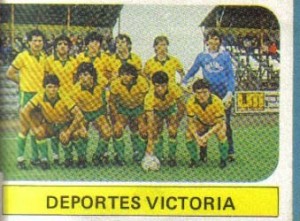Venezuela. First of all, there was still no clear connection between First and Second divisions – no team was relegated from the top league and the winner of the lower level was not promoted. But there was a new club included in the top division in 1986, Atletico Anzoategui – where it came from and why was included? Sport Maritimo was the winner of Second Division in 1985 – and stayed where it was.
As for the First Division, there were 10 teams in it and the championship was divided into 2 stages – after the first one, the best 6 teams qualified for the second stage, without carrying any records or bonus points from the their earlier effort. The remaining 4 teams finished their season. Those were: UCV FC last with 10 points,

Caracas FC – 9th with 11 points,

Deportivo Italia – curiously called Meridiano in some sources – 8th with 13 points, and Portuguesa FC – 8th with 18 points.
The top 6 started the final stage with blank records, so everybody had a chance to become a champion. Which, of course, brings the usual questions about tactics and clever or stupid schemes… After the finalists played 10 games everything was settled: Mineros de Guayana (Puerto Ordaz) was 6th in the first stage and, correspondingly, the weakest at the final stage – 6th with 6 points. Atletico Zamora (Barinas) was great at the first stage and lost first place only on goal-difference, but was not a factor at the finals – 5th with 8 points.

Atletico San Cristobal was also among the favourites in the first stage – 4 teams finished with 22 points, and goal-difference decided their positions: Atletico San Cristobal was 3rd, but had no strength left for the finals – 4th with 8 points. They had the best defensive record here (8 goals), but also the worst scorers (6 goals).
Nacional Carabobo (Valencia) was twice unfortunate – 4th in the first stage on worse goal-difference, and 3rd in the final stage with 12 points. They fought as much as they could, but finished one point short from the title. Although, even if they got this point, they would have been still second – on goal-difference.

Deportivo Tachira endede 2nd, more unlucky than Nacional Carabobo – they won the first stage. Yes, it was on goal-difference, but they won the most games there – 10 – and also scored most goals – 26. However, at the final stage goal-difference worked against them: they ended with 13 points just like the champions, but… with +1 goal- difference (14-13).

Estudiantes de Merida played smart championship – nothing much in the first stage: they were 5th. Not far behind the best teams at this stage with their 20 points, but out of the race. Nothing like that in the final stage – here they pushed hard, scored a lot, and prevailed at the end. 5 wins, 3 ties, and 2 losses was only shared record, Deportivo Tachira achieved exactly the same. The title was decided by goal-difference and here Estudiantes excelled: 21-13. Much better than Tachira’s 14-13 and thus Estudiantes won the title. This was their second title, the first won in 1980.
























































































